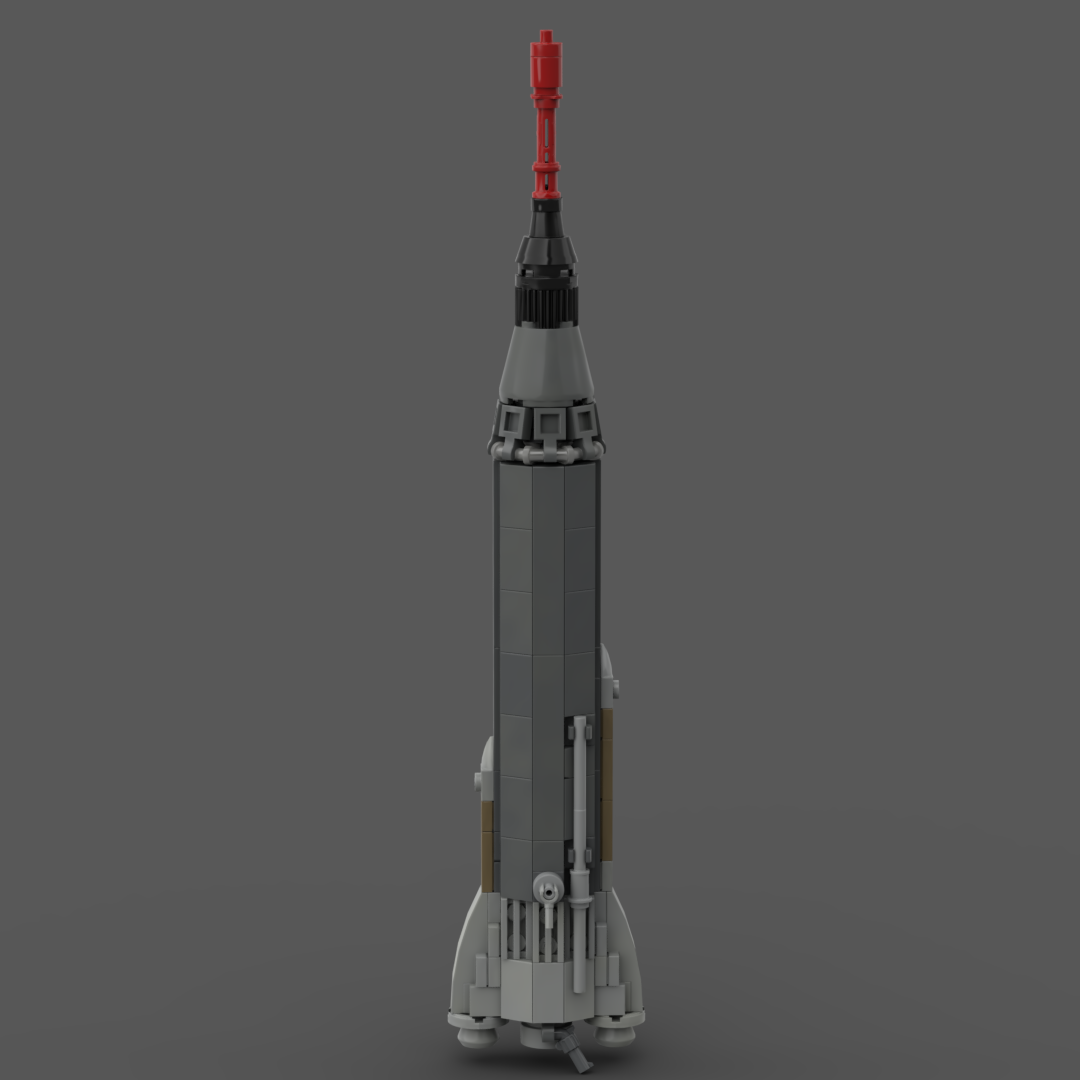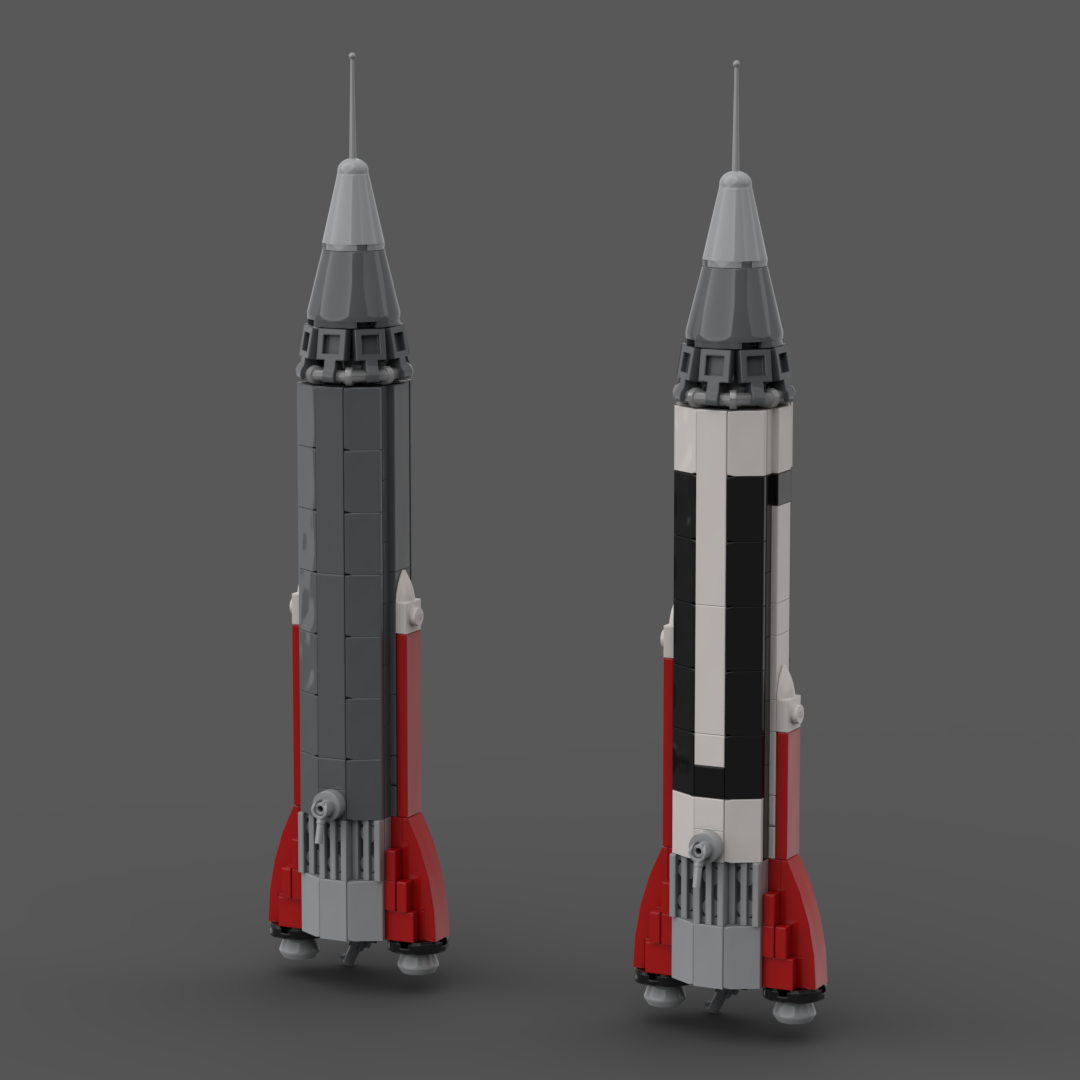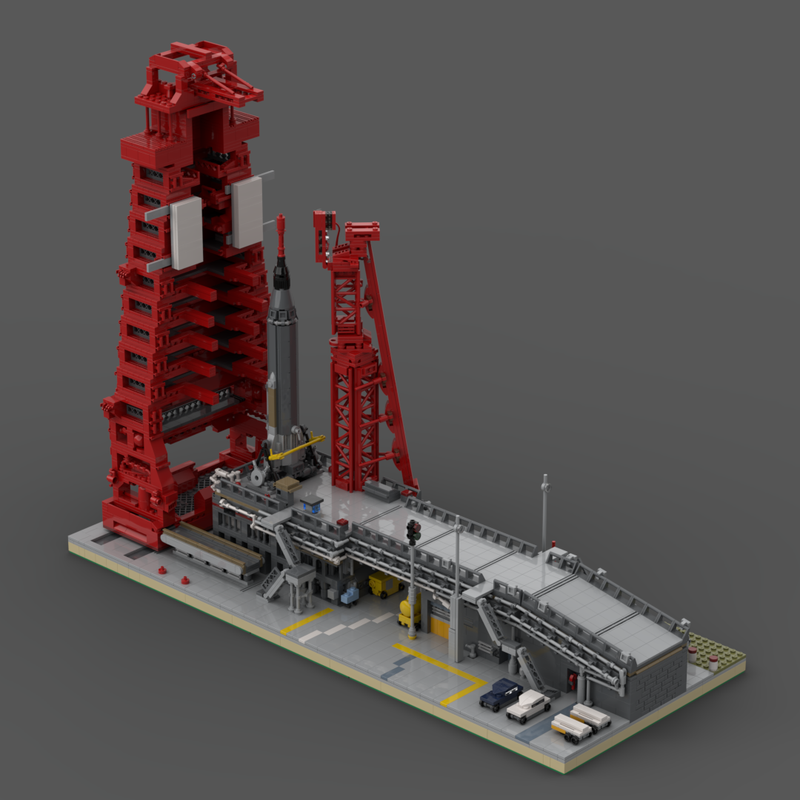
LEGO Designer:
Kevin Huang (Kehu05)
Designed:
September 2020
Categories:
Manned Spaceflight, All, Launch Vehicles, Small Lift Launch Vehicles, Space Agency - NASA
Further Information and References:
Wikipedia
Astronautix
NASA : This New Ocean - A History of Project mercury
Launch Vehicle Details
Stages:
Length:
Diameter:
Mass at Launch:
Low Earth Orbit Capacity:
Total Thrust:
Apogee:
Class:
Mercury-Atlas was a subprogram of Project Mercury that included most of the flights and tests using the Atlas LV-3B launch vehicle. The Atlas LV-3B was also used for one Mercury flight under the Big Joe subprogram.
The Mercury mission numbering system was: a two-letter designation marking the launch vehicle type, followed by a dash, then a number designating the flight/test number. The Atlas launch vehicles used for Project Mercury were given a two- or three-digit number followed by a “-D”, indicating that they were the “D” version of the Atlas.
Manned flights:
- Mercury-Atlas 6 (MA-6 / 109-D)
was the first American orbital spaceflight, which took place on February 20, 1962. Piloted by astronaut John Glenn and operated by NASA as part of Project Mercury, it was the fifth human spaceflight, preceded by Soviet orbital flights Vostok 1 and 2 and American sub-orbital flights Mercury-Redstone 3 and 4. - Mercury-Atlas 7 (MA-7 / 107-D)
launched May 24, 1962, was the fourth crewed flight of Project Mercury. The spacecraft, named Aurora 7, was piloted by astronaut Scott Carpenter. He was the sixth human to fly in space. The mission used Mercury spacecraft No. 18 and Atlas launch vehicle No. 107-D. - Mercury-Atlas 8 (MA-8 / 113-D)
was the fifth United States crewed space mission, part of NASA’s Mercury program. Astronaut Walter M. Schirra Jr., orbited the Earth six times in the Sigma 7 spacecraft on October 3, 1962, in a nine-hour flight focused mainly on technical evaluation rather than on scientific experimentation. This was the longest U.S. crewed orbital flight yet achieved in the Space Race, though well behind the several-day record set by the Soviet Vostok 3 earlier in the year. It confirmed the Mercury spacecraft’s durability ahead of the one-day Mercury-Atlas 9 mission that followed in 1963. - Mercury-Atlas 9 (MA-9 / 130-D)
was the final crewed space mission of the U.S. Mercury program, launched on May 15, 1963 from Launch Complex 14 at Cape Canaveral, Florida. The spacecraft, named Faith 7, completed 22 Earth orbits before splashing down in the Pacific Ocean, piloted by astronaut Gordon Cooper, then a United States Air Force major. The Atlas rocket was No. 130-D, and the Mercury spacecraft was No. 20. This mission marks the last time an American was launched alone to conduct an entirely solo orbital mission.
Downloads
- Sand blue parts can be any color
- half stage can be removed by taking off the sustainer engine and sliding the booster off.
- It’s recommended that you cut a bit of rigid hose to fit into the 1×1 rounds and the SNOT brick if you don’t want them to stick on the rocket.
Part count: 181 bricks, 72 lots.
| Unit | width | length | height |
|---|---|---|---|
| Studs | 5.7 | 7.2 | 33.2 |
| Inches | 1.8 | 2.3 | 10.5 |
| Centimetres | 4.6 | 5.8 | 26.6 |
No external URL provided.
Launch History information from space.skyrocket.de
Launch History information from space.skyrocket.de



